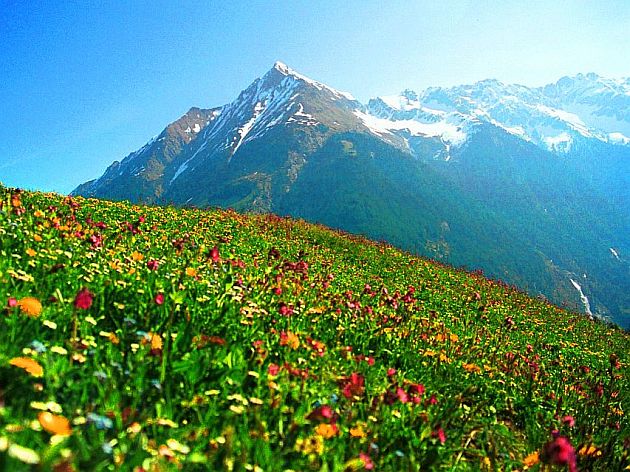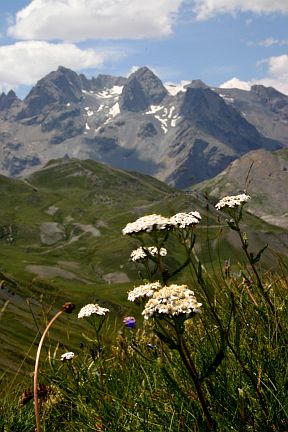Mountain Plants

Mountain plants have to face the most bewildering contrasts in living conditions of any plants found on Earth. These conditions are unbelievably harsh and impose great challenges to survival in the face of very high winds, extreme cold, wildly fluctuating temperatures, thin rocky soils, snow and ice, and a thin atmosphere that contains very little carbon dioxide, for plants to utilize, but huge amounts of UV radiation.
A mountain compresses into a very short distance conditions which, if traveling north, would be experienced over a span of thousands of miles. Each mountain is banded with horizontal layers of totally different kinds of trees, shrubs and other plants. And of course the higher you go, the more harsh the living conditions.
To see how this zoning system works, click on the following link and travel from base to summit up an amazing place in Africa called the Rwenzori Mountains.
Sometimes you will find the same kind of tree on a high mountain slope that grows in the valley below. But because of the extreme conditions at the higher altitudes the tree will be very stunted (almost like a bonsai sometimes) and take 75 years or longer (if at all) to reach the same diameter the tree in the valley reached in just 15 years.
One great extreme example of this is the stunted, wind-bent cluster of ground-hugging vegetation very near the timberline, called Krummholz, which is a German word meaning "crooked wood." Krummholz may start as a regular spruce, fir or pine tree taking root on the leeward side of a small boulder.
When the young sapling reaches the height of the boulder, the high winds and harsh conditions keep it from growing anymore vertically. Instead it starts to grow out horizontally over the ground, staying very low to the earth to protect it from the cold and high winds.

Alpine flowers are small humble plants that grow very slowly, as well. One study of a high altitude cushion plant seedling showed that in 10 years the plant put out only two tiny leaves a year and achieved a total growth of about one-third of an inch in the entire 10-year period! Now, that's slow growth!
Because mountain plants grow so slowly, most cannot sprout, mature and produce their own seeds in a single season. For this reason most are perennials, which means that they live for many years, as does a tree, for example. These plants use most of their energy just for survival, and that's why it can take many years for them to put back enough energy to flower and produce seeds.
Due to the high winds and heavy snows on tall mountains, most mountain plants are very supple and have the ability to bend a lot before breaking, and any woody plants are stubby and low like the Krummholz mentioned earlier.
A lot of the high altitude plants have the ability to retain the heat of the intense sun to use throughout the frosty night. One great example is the snow willow. The buds of this plant are covered in a thick fuzz of tiny white hairs but the bud itself is black. The sun heats up the black core and the heat is trapped there by the translucent hairs, just like a miniature greenhouse — what a beautiful design!